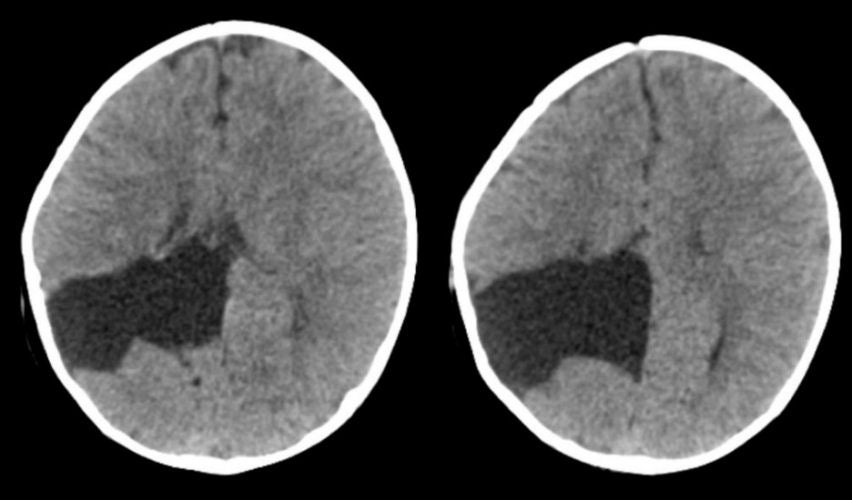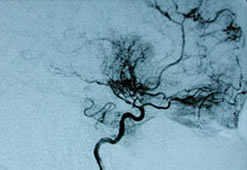What is the #1 reason people seek medical attention?
Pain
An infarct in which artery produces motor neuron type weakness, affecting the contralateral leg more than the arm or face?
ACA
A 6-year-old girl presents with headache, vomiting, and rapidly progressing loss of consciousness. Her pupils are nonreactive, and she develops bradycardia and respiratory arrest. Imaging reveals downward displacement of cerebellar tonsils through the foramen magnum.
Which of the following structures is most at risk in this condition?
A. Anterior cerebral artery
B. Oculomotor nerve
C. Brainstem respiratory centers
D. Cerebellar vermis
E. Fornix
C
Tonsillar herniation compresses the medulla, which contains the respiratory and cardiovascular centers. This can result in respiratory arrest, coma, and death. This is a life-threatening emergency.
Purple glove syndrome is an adverse effect of which drug?
Phenytoin
What is the pain pathway used in humans?
Neospinothalamic tract
What is the condition in which a person loses sight in one eye, often from the top down, appearing like a curtain being pulled down over the field of vision?
Amaurosis Fugax
A 48-year-old man complains of progressive unilateral hearing loss and tinnitus in his right ear. He also reports occasional unsteadiness when walking. MRI reveals a mass at the cerebellopontine angle compressing the CN VIII. The tumor is S-100 positive.
What is the most likely diagnosis?
A. Meningioma
B. Schwannoma
C. Pilocytic astrocytoma
D. Ependymoma
E. Medulloblastoma
B.
Vestibular schwannomas (acoustic neuromas) arise from Schwann cells of the vestibular nerve (CN VIII). Commonly located at the cerebellopontine angle, these tumors are S-100 positive and associated with neurofibromatosis type II if bilateral.
Which drug binds to the synaptic vesicle protein 2A to reduce glutamate and can be used for partial (focal) and generalized seizures?
Levetiracetam
What is the first line treatment for cervicogenic HA?
OMT

Name the condition
Porencephaly
A 55-year-old woman undergoes a CT scan after months of worsening headaches and personality changes. Imaging shows a well-circumscribed, extra-axial mass with dural attachment (“dural tail sign”) and calcifications. Biopsy reveals whorled cells and psammoma bodies.
Which of the following best describes the origin of this tumor?
A. Astrocytes
B. Schwann cells
C. Meningothelial cells of the arachnoid
D. Oligodendrocytes
E. Neural crest derivatives
C
Meningiomas are usually benign, slow-growing tumors that arise from arachnoid cap cells. They are often found adjacent to the dura and may cause seizures or focal neurologic deficits due to compression.
A 26-year-old woman with newly diagnosed focal epilepsy is started on perampanel. She has no other medical problems and currently takes an oral contraceptive containing levonorgestrel. Two weeks later, she presents with breakthrough bleeding and a positive pregnancy test.
Which of the following best explains the interaction between perampanel and her contraceptive?
A. Perampanel increases estrogen receptor sensitivity
B. Perampanel induces metabolism of levonorgestrel
C. Perampanel inhibits progesterone synthesis
D. Perampanel acts as a competitive antagonist at estrogen receptors
E. Perampanel causes delayed ovulation
B
Which type of headache is dull, constant, and worse in the morning? People who are prone to headaches typically develop this syndrome.
Medication-Overuse headache
 What is the progressive disease of the carotid arteries and their major branches that can lead to irreversible blockage?
What is the progressive disease of the carotid arteries and their major branches that can lead to irreversible blockage?
Moyamoya
A 62-year-old man presents with progressive headaches, nausea, and left-sided weakness. MRI reveals a large irregular mass in the right cerebral hemisphere with central necrosis and ring-enhancement that crosses the corpus callosum (“butterfly” pattern). A biopsy shows pseudopalisading necrosis and GFAP positivity.
Which of the following is the most likely diagnosis?
A. Oligodendroglioma
B. Meningioma
C. Glioblastoma multiforme
D. Medulloblastoma
E. Ependymoma
C
A 35-year-old man with a history of focal seizures is prescribed tiagabine. His neurologist emphasizes that this drug should not be used for generalized seizures or absence epilepsy.
What is the primary mechanism of action of this drug?
A. Voltage-gated sodium channel blocker
B. T-type calcium channel blocker
C. AMPA receptor antagonist
D. GABA reuptake inhibitor
E. GABA transaminase inhibitor
D
Calcitonin Gene Related Peptide (CGRP) is used to treat which type of headache?
Migraine
Name the condition and name which regions of the brain are affected. Clinical features include memory loss, deterioration of intellectual abilities, urinary urgency, and an abnormally slow, shuffling unsteady gait.
Binswanger Disease; basal ganglia & thalamus [slide 27]
A 44-year-old man presents after a motor vehicle accident. CT scan shows a large right-sided subdural hematoma and midline shift with herniation of the cingulate gyrus under the falx cerebri.
Compression of which of the following arteries is most likely in this herniation type?
A. Anterior cerebral artery
B. Posterior cerebral artery
C. Basilar artery
D. Middle cerebral artery
E. Superior cerebellar artery
A
Subfalcine herniation involves displacement of the cingulate gyrus under the falx cerebri, often compressing the anterior cerebral artery (ACA), leading to contralateral leg weakness due to infarction in the medial frontal lobe.
A 42-year-old man presents to the emergency department in tonic-clonic status epilepticus that has lasted more than 5 minutes. He has no history of seizures. IV access is obtained, and immediate treatment is initiated.
Which of the following is the most appropriate first-line pharmacologic treatment?
A. Phenytoin
B. Levetiracetam
C. Lorazepam
D. Valproic acid
E. Diazepam
C